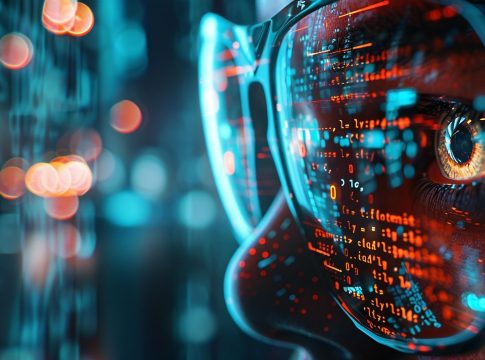The Dual Edge of AI in Cybersecurity: Opportunities and Threats
As artificial intelligence (AI) continues to permeate various industries, its impact on cybersecurity emerges as a double-edged sword. While AI offers groundbreaking tools to fortify defenses, it also arms cybercriminals with technology that enhances the sophistication and speed of their attacks. In this evolving landscape, organizations must navigate the good, the bad, and the ugly of AI’s role in cybersecurity.
AI: Strengthening Security Measures
AI has the potential to revolutionize threat detection. Machine learning algorithms can now be trained to recognize anomalies and flag them for human analysis. This partnership between AI tools and cybersecurity professionals significantly reduces the time spent addressing breaches, potentially limiting damage.
One notable method is automated red teaming, which simulates attacks to pinpoint vulnerabilities within systems. This approach works alongside blue teaming, which focuses on defensive tactics, and purple teaming, which validates both strategies. These innovative techniques are crucial, especially as AI models become targets for breaches themselves.
Organizations can now also harness generative AI to produce high-quality synthetic datasets for training systems—providing a major boost in forecasting vulnerabilities. Furthermore, AI can defend against AI-driven social engineering attacks by monitoring communications for potential threats, allowing companies to address issues before they escalate.
Growing Threats: AI in the Hands of Cybercriminals
However, this arms race has intensified. As organizations exploit AI’s benefits, cybercriminals utilize the same technologies to craft sophisticated attacks that are harder to detect. According to recent findings from the World Economic Forum, a staggering 66% of firms anticipate a significant AI impact on cybersecurity.
In 2023 alone, companies globally suffered a loss of $12.5 billion due to cybercrime—a 22% increase from the previous year. These statistics raise alarms about emerging threats like deepfake phishing, which is expected to increase substantially. Deloitte’s survey indicated that about 25% of businesses reported facing deepfake incidents in 2024, demonstrating the need for a culture of continuous verification over blind trust.
The High Stakes of AI-Powered Cyber Threats
The implications of AI-driven attacks can be staggering. For instance, a notorious incident involved an employee from the engineering firm, Arup, falling victim to an AI-generated deepfake, authorizing a $25 million transfer under false pretenses. The risks aren’t just financial; approximately 25% of executives cite loss of stakeholder trust as a significant concern alongside fears of compromised proprietary information.
Moreover, AI poses a risk to critical infrastructure, threatening power grids and healthcare systems. An attack on these sectors could lead to disastrous consequences, including widespread outages or jeopardized patient care.
Building Resilience: A Human-AI Partnership
As the landscape grows more complicated, organizations must adapt. The future of security lies in fusing human expertise with advanced technologies. This partnership will be vital in bridging the gap between established defenses and emerging threats.
To counteract the sophisticated tactics employed by cybercriminals, organizations should collaborate with experienced partners in cybersecurity. By embracing the complementary strengths of AI and human intervention, businesses can better prepare for the daunting challenges that lie ahead.
By fully understanding the dual nature of AI in cybersecurity, organizations can not only enhance their defenses but also foster an ethos of vigilance and preparedness against a backdrop of ever-evolving threats.

Writes about personal finance, side hustles, gadgets, and tech innovation.
Bio: Priya specializes in making complex financial and tech topics easy to digest, with experience in fintech and consumer reviews.

